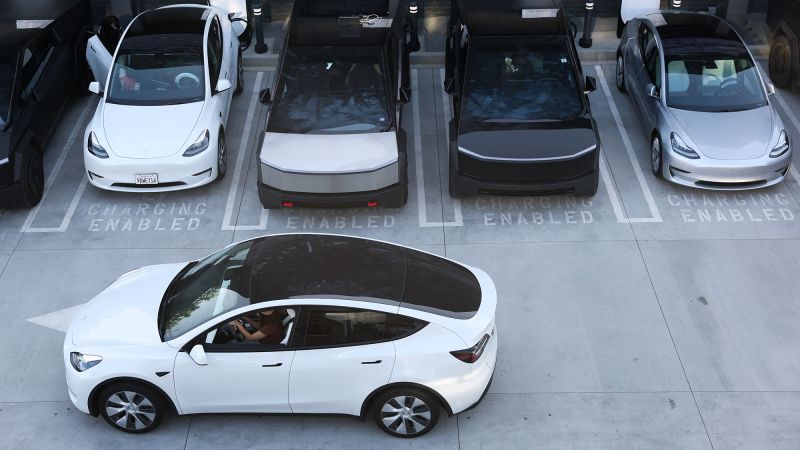Tesla, the iconic electric vehicle manufacturer led by CEO Elon Musk, is currently grappling with substantial financial challenges. On a recent Wednesday, the company disclosed a notable decline in its adjusted earnings for the second quarter, coinciding with a record drop in sales during the same period. Investors and analysts alike are increasingly concerned about the company’s direction, with the latest figures igniting discussions about the sustainability of Tesla’s business model in a rapidly evolving automotive landscape.
The report highlighted a concerning 23% decrease in Tesla’s adjusted net income, which fell from $1.8 billion to $1.4 billion year-on-year, representing a drop of $419 million. Surprisingly, this decrease outpaced the company’s sales decline of 13.5%. The stricter gauge for net income also showed a decrease of 16%, bringing it down to $1.2 billion. Such figures are alarming as they suggest that Tesla’s fundamentals are under pressure from various external and internal factors.
Breaking down the revenue streams, Tesla’s primary business – automotive sales – encountered a 16% decline from April to June, while its overall revenue saw a 12% drop. This decline more significant than anticipated indicates that Tesla struggled to maintain prices for its vehicles, an essential element of the company’s financial health. Furthermore, the revenue generated from each car sold fell by $500 during the quarter, reducing the average revenue per vehicle to $42,231.
Interestingly, the sale of Tesla’s flagship models, the Model Y and Model 3, decreased by 12% compared to the previous year, but the more luxurious offerings, including the highly anticipated Cybertruck, witnessed a staggering 52% plunge. Analysts believe these trends can be attributed to a combination of backlash against Musk’s political stances and heightened competition in the electric vehicle (EV) sector, especially from Chinese automakers that have been rapidly gaining market share.
Adding to Tesla’s woes, even in markets witnessing an increase in overall EV sales, Tesla has recorded a downturn. The company might soon be dethroned as the world’s leading EV manufacturer, a title it has held for some time, particularly as BYD, a Chinese competitor not present in the United States, continues to rise in the ranks.
What is particularly striking about Tesla’s current predicament is the dramatic shift from its recent past. Over the last 18 months, the company has faced a stark contrast from a period that celebrated only one decline in year-over-year sales, which occurred during the height of the COVID-19 pandemic. Now, however, it faces a myriad of obstacles that threaten its financial stability and market leadership.
One immediate concern is the impending expiration of a significant $7,500 tax credit for U.S. buyers of electric vehicles, which takes effect in October. This could compel Tesla to lower prices and, in turn, further shrink its profit margins. Notably, about half of Tesla’s sales are attributed to the U.S. market, making this a crucial area for the company’s revenue generation efforts.
The concerns do not stop there. A major financial hurdle on the horizon is the potential elimination of the market for regulatory credit sales. These credits, which have generated approximately $11 billion for Tesla since 2019, have been a lifeline for the company. Previously, traditional internal combustion engine manufacturers purchased these emissions credits to avoid fines for exceeding emissions limits. However, recent legislative changes may remove financial penalties, which could drastically impact Tesla’s revenue streams.
In the first quarter of this year, Tesla would have reported losses had it not been for the revenue generated from credit sales. However, in the most recent quarter, the company managed to exceed its net income without these credits, suggesting that the pressure to develop a sustainable profit margin is intensifying.
Investors are looking to Musk for reassurance, as he is scheduled to address them later in the day. To mitigate financial anxiety, Musk may redirect discussions toward Tesla’s futuristic ventures, including plans for robotaxis and humanoid robots. Although Tesla did launch a limited robotaxi service in Austin, Texas, it has not yet been rolled out on a wider scale and currently requires an employee to be present in the vehicle.
Despite Tesla’s claims that its approach to autonomy could improve safety while scaling the robotaxi network rapidly, it may take years before this service contributes meaningfully to profits. As the situation evolves, Tesla’s strategies and financial health will be closely monitored. The industry watches with bated breath to see how Tesla navigates these tumultuous waters. This developing story will continue to unfold, providing a critical lens into the future of one of the world’s most innovative automotive companies.












